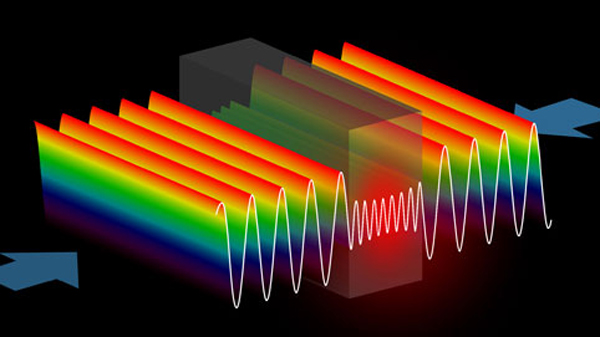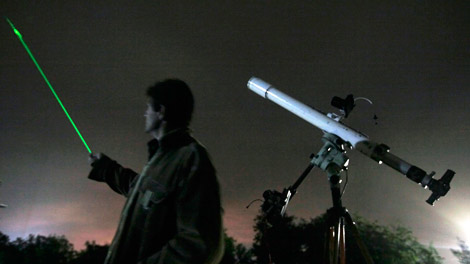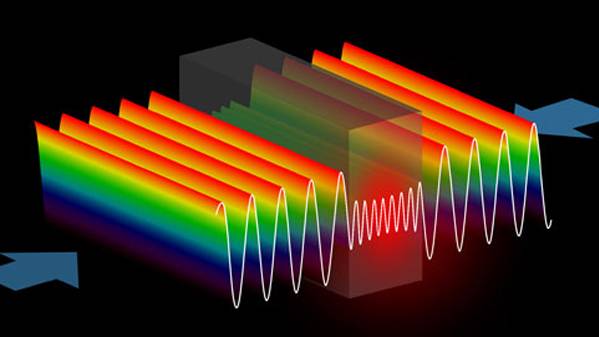Scientists announce creation of world’s first anti-laser
Source: ctv.ca
Its name suggests that it may be something from a science-fiction novel, perhaps a cutting edge system defending against ray gun attacks.But while an anti-laser won’t stop roving gangs of space pirates, its creators believe it will launch a major step forward in computer technology.

Yale University scientists developed the first ’anti-laser,’ or reverse laser, which allows interfering beams of light to perfectly cancel each other out. They announced the development Friday. (Yidong Chong / Yale University)

An astronomer uses a laser pointer to show the radiant of the Orionids at an observatory near the village of Avren east of the Bulgarian capital Sofia, Tuesday, Oct. 20, 2009. (AP / Petar Petrov)
Prof. Douglas Stone, a physicist at Yale University, announced the creation of the anti-laser device in the journal Science on Friday. Actually called a coherent perfect absorber (CPA), it is expected to play a major role in the next generation of computers, built with components that use light rather than electrons.
While regular lasers use a semiconductor such as gallium arsenide to produce a focused beam of light, the CPA uses silicon and traps light waves until they are converted into heat.
In layman’s terms, while lasers create beams of light by focusing energy, anti-lasers harness beams of light to absorb energy.
Because the device uses silicon – the most common semiconductor material – it could be seamlessly integrated into computers.
Stone originally thought up the CPA to explain which materials could be used as the basis of lasers, but the device could take on a life of its own.
Consider this: Fifty years after the laser was first invented, it is being used in everything from nuclear fusion and surgery to CD players and pointing devices foolishly used to target at airplane cockpits and hockey goaltenders.
The potential uses for an anti-laser are similarly vast.
Stone suggests it could be used as optical switches or other components in the next generation of computers, or in radiology by targeting electromagnetic radiation to a small area of the body.
The device focuses two laser beams of a specific frequency into a silicon cavity, trapping the beams until all their energy is dissipated. The device currently absorbs 99.4 per cent of that energy, but Stone says future models theoretically could absorb 99.99 per cent.
Article from: ctv.ca






















